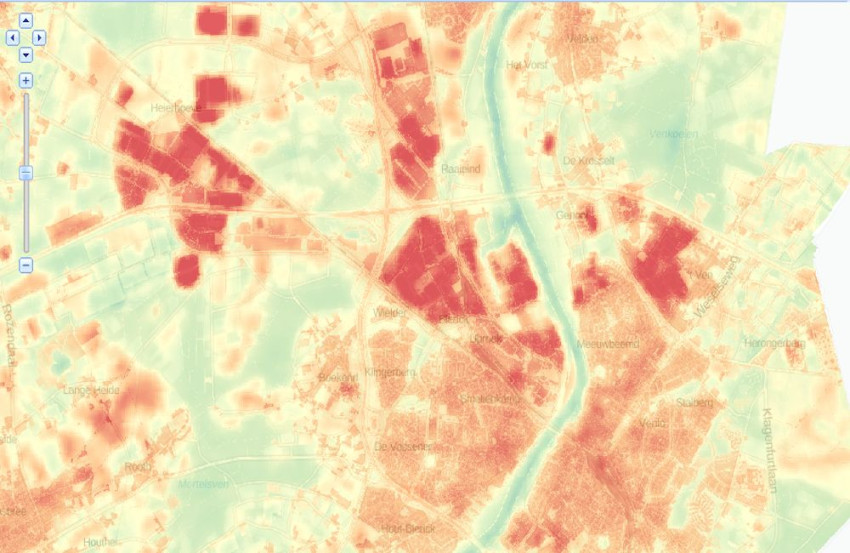
Consider thermal stress when repurposing office buildings
It sounds great, converting an empty office building into apartments. Until we ‘enjoy’ such a hot summer, and you discover that you've landed on a heat island, at least that's what engineering consultancy BOOT suggests with its thermal stress map.
Almost entirely paved surfaces, very little undergrowth, few trees and often also dark façades: these have proven the perfect ingredients for driving up temperatures even further during the hot weather over the last few weeks. ‘At the Trade Port West industrial park in Venlo, we registered a surface temperature of 55.7°C,’ says Bertrick van den Dikkenberg, one of the creators of the thermal stress map which can now also be consulted online. 'All the stone functions like a large battery that is continually emitting heat.'
Less cool at night too
Working in high temperatures is tough, but if you can sleep in a somewhat cooler setting, then you can manage, explains Van den Dikkenberg. And that's precisely where we see major issues with repurposed office buildings. ‘People living there also have to deal with much higher ambient temperatures when living on such a heat island.’
Van den Dikkenberg is annoyed at how easily office buildings are being converted into apartments. ‘Move some walls, install the sanitary amenities and you're ready for the property manager. Roads and parking facilities are already present. The new residents will have to deal with summer heat themselves.’ This means they hook up extra power-hungry cooling equipment.
Facade plants
Are there examples of office buildings where thermal stress has been dealt with properly? Van den Dikkenberg is not aware of any. But there are definitely options. ‘Clothe the façade with plants – that provides cooling. Plant trees and make sure they get enough water in summer. Both their shadow and evaporation via the leaves tend to rapidly lower temperatures by a couple of degrees. And fit light-coloured insulation to the roof.'
His warning is not superfluous. The municipality of Amsterdam is planning to transform the office district in Zuidoost into a residential area. Thermal stress should therefore be an item on the agenda there too, beside water resistance and sustainability.
If you found this article interesting, subscribe for free to our weekly newsletter!

Opening image: the area around Trade Port West in Venlo, where a temperature of 55.7°C was measured. Section of the thermal stress map.






